Halloween III: Season of the Witch
3.8 /10 1 Votes
33% Rotten Tomatoes Film series Halloween film series Language English | 4.5/10 IMDb 1.5/4 Roger Ebert Genre Horror, Sci-Fi Duration Country United States | |||||||||||||||||||||||||||||||||
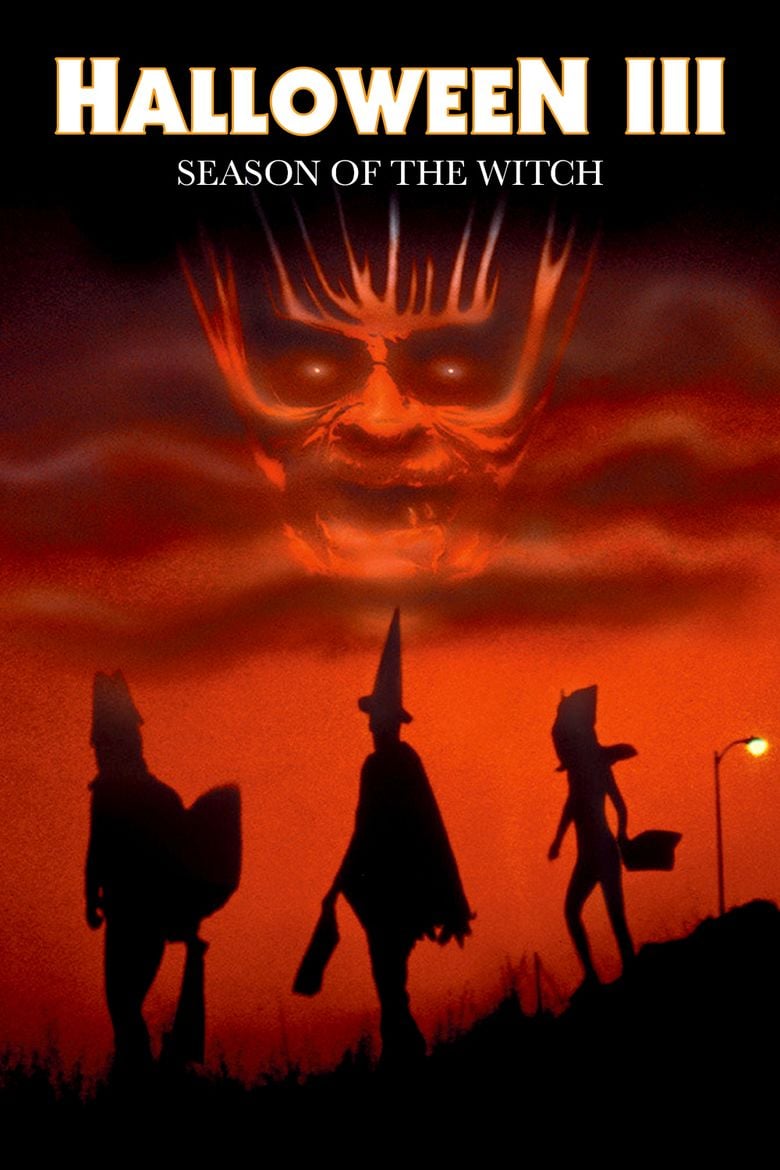 | ||||||||||||||||||||||||||||||||||
Release date October 22, 1982 (1982-10-22) Cast (Dr. Daniel 'Dan' Challis), (Ellie Grimbridge), (Conal Cochran), (Rafferty), (Buddy Kupfer), Jadeen Barbor (Betty Kupfer)Similar movies , Mission: Impossible III , Harry Potter and the Philosopher's Stone , Halloween: The Curse of Michael Myers , The Purge: Anarchy , Halloween Tagline ...and now the earth will run with blood again! | ||||||||||||||||||||||||||||||||||
Halloween iii season of the witch 5 10 movie clip test room a 1982 hd
Halloween III: Season of the Witch is a 1982 American science fiction horror film and the third installment in the Halloween film series. It is the first film to be written and directed by Tommy Lee Wallace. John Carpenter and Debra Hill, the creators of Halloween, returned as producers. Starring Tom Atkins as Dr. Dan Challis, Stacey Nelkin as Ellie Grimbridge, and Dan O'Herlihy as Conal Cochran, the story focuses on an investigation by Challis and Grimbridge into the activities of Cochran, the mysterious owner of the Silver Shamrock Novelties company, in the week approaching Halloween night.
Contents
- Halloween iii season of the witch 5 10 movie clip test room a 1982 hd
- Halloween iii season of the witch novelization unabridged audiobook
- Plot
- Production
- Writing
- Casting
- Directing
- Music
- Box office
- Merchandising
- Reception
- References

Halloween III is the only entry in the series that does not feature the series antagonist Michael Myers, nor does it include story elements from either Halloween (1978) or Halloween II (1981). In fact, it treats the first film and, apparently, its sequel as a fictional films, as one of the characters watches a trailer for the original during the film; additionally, the film's tagline is a reference to the tagline from the original as well. It also departs from the slasher genre which the first two installments were part of, instead featuring a "witchcraft" theme with science fiction aspects and parallels to old Celtic fairy tales. Carpenter and Hill believed that the Halloween series had the potential to branch into an anthology series of horror films that centered around the night of Halloween, with each film containing its own characters, setting, and storyline. Director Wallace stated that there were many ideas for Halloween-themed films, some of which could have potentially created any number of their own sequels, and that Season of the Witch was meant to be the first of the anthology series. However, after the film's disappointing critical reception and box-office gross, Michael Myers was brought back six years later in Halloween 4: The Return of Michael Myers (1988).
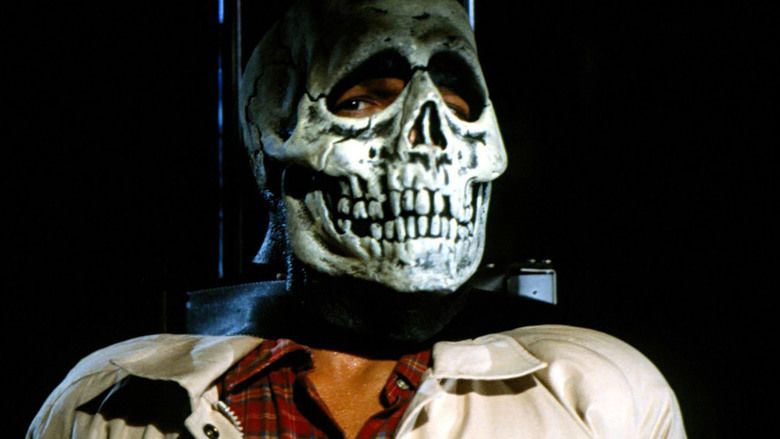
The frequency of graphic violence and blood is less than that of Halloween II, but the film's death scenes remain intense. As with other films in the series, suspense and dramatic tension is a key theme. The dramatic element of violence against young children, something often taboo even for horror films, is explored.
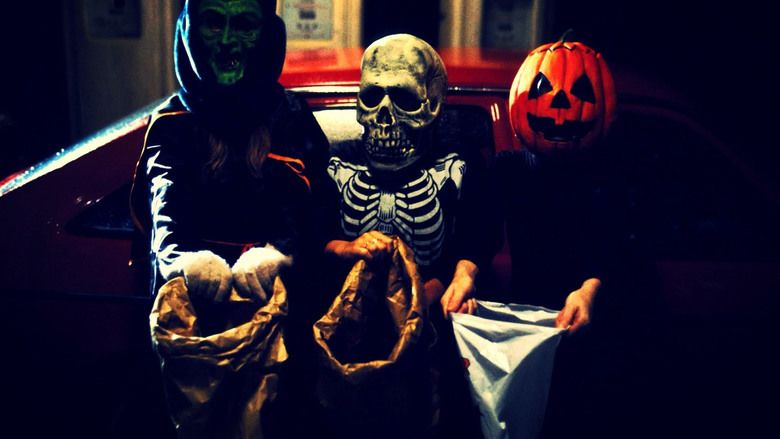
Produced on a budget of $2.5 million, Halloween III grossed $14.4 million at the box office in the United States, making it the poorest performing film in the Halloween series at the time. In addition to weak box office returns, most critics gave the film negative reviews. One critic suggests that if Halloween III was not part of the Halloween series, then it would simply be "a fairly nondescript eighties horror flick, no worse and no better than many others."
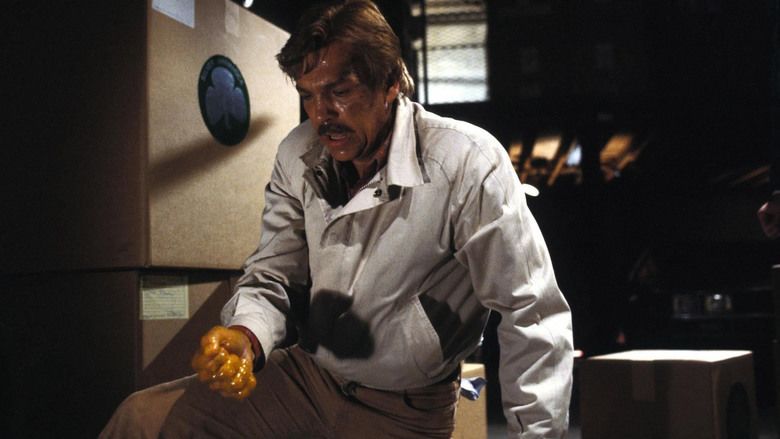
Despite an initially negative reception for the film, largely due to fan disappointment over the absence of Michael Myers, re-evaluation over the past three decades has given Halloween III new legions of fans and established its reputation as a standalone cult film.
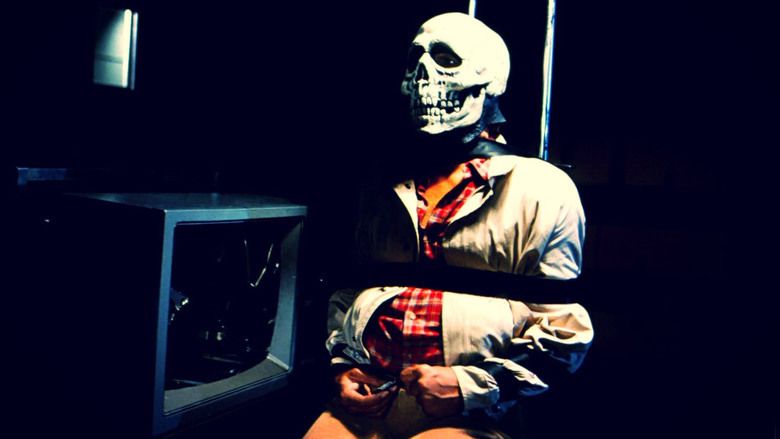
Halloween iii season of the witch novelization unabridged audiobook
Plot

On October 23, shop owner Harry Grimbridge (Al Berry) runs along a barren road in Northern California, chased by mysterious figures in business suits. He makes it to a gas station clutching a Silver Shamrock jack-o'-lantern mask. He is driven to the hospital by station attendant Walter Jones (Essex Smith), all the while rambling, "they're going to kill us all". At the hospital, Grimbridge is placed in the care of Dr. Dan Challis (Tom Atkins). That night, another mysterious man in a suit enters Grimbridge's hospital room, kills him, then goes to his car and immolates himself.
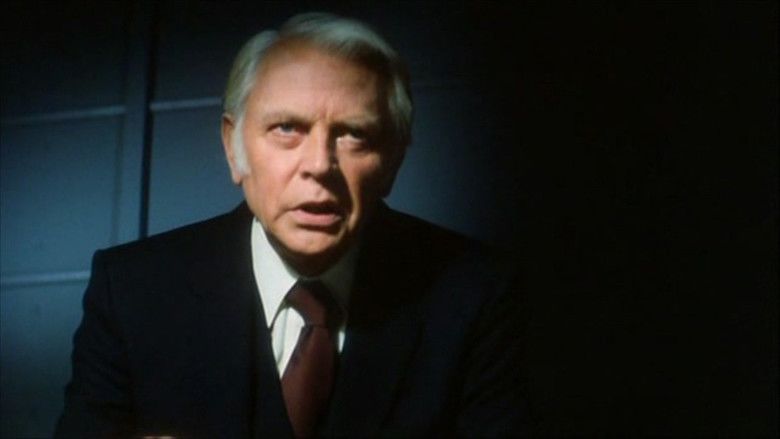
The next morning, Grimbridge's daughter Ellie (Stacey Nelkin) arrives to identify her father's remains. Ellie and Challis agree to investigate his murder, leading them to the small town of Santa Mira, California. The motel manager (Michael Currie) explains that Conal Cochran (Dan O'Herlihy) and his company, Silver Shamrock Novelties, which produces wildly popular latex masks for Halloween, are responsible for the town's prosperity. While signing the motel register, Challis learns that Grimbridge stayed at the same motel. Other motel guests include shop owners Marge Guttman (Garn Stephens) and Buddy Kupfer (Ralph Strait), Buddy's wife Betty (Jadeen Barbor), and their son Little Buddy (Bradley Schacter), who all have business at the company's factory.
Guttman finds a microchip on the back of a Silver Shamrock button, and is electrocuted after poking it with a hairpin. Challis and Ellie learn of Guttman's accident, and Challis attempts to help but is forced away by a group of men dressed in lab coats who drive away in a van with Marge's body. The next morning, Challis and Ellie tour the factory with the Kupfers and discover Grimbridge's car there, guarded by more men dressed in suits. They return to the motel but cannot contact anyone outside the town. While Challis attempts to phone for the authorities, Ellie is kidnapped by the men in suits and driven to the factory.
Challis pursues them, breaks into the factory, and discovers that the men in suits are androids created by Cochran. Challis is captured by the androids and Cochran reveals his plan to sacrifice children wearing his masks, thus bringing about a resurrection of the ancient age of witchcraft. The masks contain microchips, each containing a fragment of Stonehenge that, when activated by a signal in a company commercial, summon a swarm of insects and snakes to kill the mask wearer and anyone nearby. To demonstrate, Cochran kills the Kupfers this way.
Challis escapes through a ventilation shaft and rescues Ellie. He dumps the chips from the overhead rafters and activates their signal with the commercial, killing Cochran and his employees, and destroying the computer chips and factory. As the two drive away, Ellie attacks Challis, revealing that Cochran replaced the real Ellie with an android duplicate. Challis crashes the vehicle and decapitates the android with a tire iron. On foot, Challis makes it to the gas station and phones the television stations, in an attempt to convince the station managers not to air the Silver Shamrock commercial. He persuades them to take it off channels one and two, but not channel three. Challis desperately yells into the telephone, as the commercial begins to play on the television in front of him. His pleading shouts of warning grow more intense as the commercial continues to play, indicating the widespread carnage that is about to take place.
Production
When approached about creating a third Halloween film, original Halloween writers John Carpenter and Debra Hill were reluctant to pledge commitment. According to Fangoria magazine, Carpenter and Hill agreed to participate in the new project only if it was not a direct sequel to Halloween II, which meant no Michael Myers. Irwin Yablans and Moustapha Akkad, who had produced the first two films, filmed Halloween III on a budget of $2.5 million.
Special effects artist Don Post of Post Studios designed the latex masks in the film which included a glow-in-the-dark skull, a lime-green witch and an orange Day-Glo jack-o'-lantern. Hill told Aljean Harmetz, "We didn't exactly have a whole lot of money for things like props, so we asked Post, who had provided the shape mask for the earlier 'Halloween' [II] ..., if we could work out a deal." The skull and witch masks were adaptations of standard Post Studios masks, but the jack-o'-lantern was created specifically for Halloween III. Post linked the masks of the film to the popularity of masks in the real world:
Every society in every time has had its masks that suited the mood of the society, from the masked ball to clowns to makeup. People want to act out a feeling inside themselves—angry, sad, happy, old. It may be a sad commentary on present-day America that horror masks are the best sellers.
Most of the filming took place on location in the small coastal town of Loleta, California. Familiar Foods, a milk bottling plant in Loleta, served as the Silver Shamrock Novelties factory, but all special effects involving fire, smoke, and explosions were filmed at Post Studios.
Writing
Producers recruited British science fiction writer Nigel Kneale to write the original screenplay, mostly because Carpenter admired his Quatermass series. Kneale said his script did not include "horror for horror's sake". He adds, "The main story had to do with deception, psychological shocks rather than physical ones." Kneale asserts that movie mogul Dino De Laurentiis, owner of the film's distribution rights, did not care for it and ordered more graphic violence and gore. While much of the plot remained the same, the alterations displeased Kneale, and he requested that his name be removed from the credits. Director Tommy Lee Wallace was then assigned to revise the script. Wallace told Fangoria that he created the title of the film as a reference to "a plot point"—the three masks featured in the film—and an attempt to connect this film with the others in the series. He explained in the interview the direction that Carpenter and Hill wanted to take the Halloween series, stating, "It is our intention to create an anthology out of the series, sort of along the lines of Night Gallery, or The Twilight Zone, only on a much larger scale, of course." Each year, a new film would be released that focused on some aspect of the Halloween season.
Hill told Fangoria that the film was supposed to be "a 'pod' movie, not a 'knife' movie." As such, Wallace drew inspiration from another pod film: Don Siegel's Invasion of the Body Snatchers (1956). The fictional town of Santa Mira was originally the setting of Invasion of the Body Snatchers and named as such in Halloween III as an homage to Siegel's film. Aspects of the plot proved very similar as well, such as the "snatching" bodies and replacing them with androids. Halloween III's subtitle comes from George A. Romero's second film Season of the Witch (1973)—also known as Hungry Wives—but the plot contains no similarity to Romero's story of a housewife who becomes involved in witchcraft.
Film critics like Jim Harper called Wallace's plot "deeply flawed". Harper argues, "Any plot dependent on stealing a chunk of Stonehenge and shipping it secretly across the Atlantic is going to be shaky from the start." He noted, "there are four time zones across the United States, so the western seaboard has four hours to get the fatal curse-inducing advertisement off the air. Not a great plan." Harper was not the only critic unimpressed by the plot. Roger Ebert of the Chicago Sun-Times wrote, "What's [Cochran's] plan? Kill the kids and replace them with robots? Why?"
Casting
The cast of Halloween III: Season of the Witch consisted mostly of character actors whose previous acting credits included cameo appearances on various television series. The exceptions were Tom Atkins and veteran actor Dan O'Herlihy. Cast as surgeon Daniel "Dan" Challis, Atkins had appeared in several John Carpenter films prior to Halloween III. Atkins played Nick Castle in The Fog (1980) and Rehme in Escape from New York (1981). Atkins guest starred in television series such as Harry O, The Rockford Files and Lou Grant. Atkins told Fangoria that he liked being the hero. As a veteran horror actor, he added, "I wouldn't mind making a whole career out of being in just horror movies." After Halloween III, Atkins continued to play supporting roles in dozens of films and television series.
Stacey Nelkin co-starred as Ellie Grimbridge, a young woman whose father is murdered by Silver Shamrock. She landed the role after a make-up artist working on the film told her about the auditions. In an interview, Nelkin commented on her character: "Ellie was very spunky and strong-minded. Although I like to think of myself as having these traits, she was written that way in the script." Nelkin considered it an "honor" to be playing Jamie Lee Curtis's successor. According to Roger Ebert, Nelkin's performance was the "one saving grace" in the film. Ebert explained, "She has one of those rich voices that makes you wish she had more to say and in a better role .... Too bad she plays her last scene without a head." Prior to her role as Grimbridge, Nelkin was one of the main characters in the 1980 Mad Magazine movie Up the Academy, which also starred Ralph Macchio. After Halloween III, Nelkin continued working as a character actress on television.
Veteran Irish actor Dan O'Herlihy was cast as Conal Cochran, the owner of Silver Shamrock and the witch from the film's title (a 3000-year-old demon in Kneale's original script). O'Herlihy had played close to 150 roles before co-starring as the Irish trickster and was nominated for an Academy Award for his performance in The Adventures of Robinson Crusoe (1954). He appeared in another twenty films and television series before his death in 2005. O'Herlihy admitted in an interview with Starlog magazine that he was not particularly impressed with the finished film. When asked what he thought of working in the horror film, O'Herlihy responded, "Whenever I use a Cork accent, I'm having a good time, and I used a Cork accent in [Halloween III]. I thoroughly enjoyed the role, but I didn't think it was much of a picture, no." Two members of the supporting cast were not strangers to the Halloween series. Nancy Kyes played Challis's ex-wife Linda; she had appeared in the first two Halloween films as Laurie Strode's promiscuous friend Annie Brackett. Stunt performer Dick Warlock makes a cameo appearance as the android assassin. Warlock had earlier co-starred as Michael Myers in Halloween II. Jamie Lee Curtis also provided uncredited voice work as the Santa Mira curfew announcer and the telephone operator.
Directing
The film was the directorial debut of Tommy Lee Wallace, although he was not a newcomer to the Halloween series. Wallace had served as art director and production designer for John Carpenter's original Halloween and he had previously declined to direct Halloween II in 1981. After Halloween III, Wallace directed other horror films such as Fright Night Part 2 (1988), Vampires: Los Muertos (2002) and the miniseries It (1990), the television adaptation of the Stephen King novel. Despite disagreements between Wallace and original script writer Nigel Kneale, the actors reported that Wallace was a congenial director to work with. Stacey Nelkin told one interviewer, "The shoot as a whole was fun, smooth and a great group of people to work with. Tommy Lee Wallace was incredibly helpful and open to discussion on dialogue or character issues."
Although the third film departed from the plot of the first two films, Wallace attempted to connect all three films together through certain stylistic themes. The film's opening title features a digitally animated jack-o'-lantern, an obvious reference to the jack-o'-lanterns that appeared in the opening titles of Halloween and Halloween II. Wallace's jack-o'-lantern is also the catalyst in the Silver Shamrock commercials that activate the masks. Another stylistic reference to the original film is found in the scene where Dr. Challis tosses a mask over a security camera, making the image on the monitor seem to be peering through the eye holes. This is a nod to the scene in which a young Michael Myers murders his sister while wearing a clown mask. Finally, the film contains a brief reference to its predecessors by including a few short scenes from Halloween in a television commercial that advertises the airing of the film for that upcoming holiday as a minor story within a story.
Wallace's use of gore served a different purpose than in Halloween II. According to Tom Atkins, "The effects in this [film] aren't bloody. They're more bizarre than gross." Special effects and makeup artist Tom Burman concurred, stating in an interview, "This movie is really not out to disgust people. It's a fun movie with a lot of thrills in it; not a lot of random gratuitous gore." Many of the special effects were meant to emphasize the theme of the practical joke that peppers the plot. New York Times film critic Vincent Canby notes, "The movie features a lot of carefully executed, comically horrible special effects ...." Canby stood as one of the few critics of the time to praise Wallace's directing: "Mr. Wallace clearly has a fondness for the clichés he is parodying and he does it with style."
Music
The soundtrack was composed by John Carpenter and Alan Howarth, who worked together on the score for Halloween II and several other films. Music remained an important element in establishing the atmosphere of Halloween III. Just as in Halloween and Halloween II, there was no symphonic score. Much of the music was composed to solicit "false startles" from the audience.
The score of Halloween III differed greatly from the familiar main theme of the original and sequel. Carpenter replaced the familiar piano melody with a slower, electronic theme played on a synthesizer with beeping tonalities. Howarth explains how he and Carpenter composed the music for the third film:
The music style of John Carpenter and myself has further evolved in this film soundtrack by working exclusively with synthesizers to produce our music. This has led to a certain procedural routine. The film is first transferred to a time coded video tape and synchronized to a 24 track master audio recorder; then while watching the film we compose the music to these visual images. The entire process goes quite rapidly and has "instant gratification," allowing us to evaluate the score in synch to the picture. This is quite an invaluable asset.
One of the more memorable aspects of the film's soundtrack was the jingle from the Silver Shamrock Halloween mask commercial. Set to the tune of "London Bridge Is Falling Down", the commercial in the film counts down the number of days until Halloween beginning with day eight followed by an announcer's voice (Tommy Lee Wallace) encouraging children to purchase a Silver Shamrock mask to wear on Halloween night:
Eight more days 'til Halloween,Halloween, Halloween.Eight more days 'til Halloween,Silver Shamrock.Box office
Halloween III: Season of the Witch opened in 1,297 theaters in the United States on October 22, 1982, and earned $6,333,259 in its opening weekend. Like its predecessor, the film was distributed through Universal by Italian producer Dino De Laurentiis. It grossed a total of $14,400,000 in the United States, but was the worst performing Halloween film at the time. Several other horror films that premiered in 1982 performed far better, including Poltergeist ($76,606,280), Friday the 13th Part III ($34,581,519), and Creepshow ($21,028,755).
In 1983, Edd Riveria, designer of the film's theatrical poster, received a Saturn Award nomination from the Academy of Science Fiction, Fantasy & Horror Films, USA, for Best Poster Art, but lost to John Alvin's E.T.: The Extra-Terrestrial (1982) artwork. Riveria's poster art featured a demonic face descending on three trick-or-treaters. His artwork was later featured on the cover of Fangoria in October 1982. The stylized face on the theatrical poster is actually a distorted image of the witch mask which appears in the film. The image of the trick-or-treaters is similar to a shot in the movie that shows children in Phoenix, Arizona walking in silhouette with a red sunset in the background.
Merchandising
As part of a merchandising campaign, the producers requested Don Post to mass-produce the skull, witch, and jack-o'-lantern masks. Producers had given exclusive merchandising rights to Post as part of his contract for working on the film, and Post Studios had already successfully marketed tie-in masks for the classic Universal monsters, Planet of the Apes (1968), Star Wars (1977), and E.T.: The Extra-Terrestrial (1982). Post used the original molds for the masks in the film to mass-produce masks for retail sale. He speculated, "Because the masks are so significant to the movie, they could become a cult item, with fans wanting to wear them when they go to see the movie." Post also gave mask-making demonstrations for a Universal Studio tour in Hollywood. The masks retailed for $25 when they finally appeared in stores. The script was adapted as a paperback novelization in 1982 by science-fiction writer Dennis Etchison writing under the pseudonym Jack Martin. The book was a best seller and was reissued in 1984. Etchison wrote the novelization to Halloween II only a year before.
Halloween III was later released on VHS and LaserDisc in 1983 by MCA/Universal Home Video and by Goodtimes Home Video in 1996. DVD versions were distributed by Goodtimes in 1998, Universal in 2002, in 2007 as a two-disc "Universal double feature" with Halloween II, and Shout! Factory released a collector's edition DVD and Blu-ray of the film on September 18, 2012. The film was released on Blu-ray for the first time on September 18, 2012 from Shout! Factory, containing the same special features as their collector's edition DVD, which are a commentary, documentary, trailers, and still galleries. Universal released a bare bones Blu-ray release of the film on August 11, 2015.
Reception
Critical response to Halloween III: Season of the Witch proved to be negative, despite some support. New York Times reviewer Vincent Canby struggled to apply a definite label to the film's content. He remarks, "'Halloween III' manages the not easy feat of being anti-children, anti-capitalism, anti-television and anti-Irish all at the same time." On the other hand, he says that the film "is probably as good as any cheerful ghoul could ask for." Other critics were far more decisive in their assessments. Roger Ebert wrote that the film was "a low-rent thriller from the first frame. This is one of those Identikit movies, assembled out of familiar parts from other, better movies." However, he did praise Stacey Nelkin's performance. Cinefantastique magazine called the film a "hopelessly jumbled mess". Jason Paul Collum points to the absence of Michael Myers and the film's nihilistic ending as reasons why the film dissatisfied reviewers and audiences alike.
Tom Milne of Time Out offered a more positive review, calling the title "a bit of a cheat, since the indestructible psycho of the first two films plays no part here." Unlike other critics, Milne thought the new plot was refreshing: "With the possibilities of the characters [of the previous Halloween films] well and truly exhausted, Season of the Witch turns more profitably to a marvellously ingenious Nigel Kneale tale of a toymaker and his fiendish plan to restore Halloween to its witch cult origins." Although Milne was unhappy that Kneale's original script was reduced to "a bit of a mess", he still believed the end result was "hugely enjoyable". The film currently holds a 37% rating on review aggregator Rotten Tomatoes based on 19 reviews.
PopMatters journalist J.C. Maçek III wrote "In truth, Halloween III: Season of the Witch (1982) features no serial killers or slashers of any kind. Instead, it features killer Halloween masks (that seem to teleport snakes and bugs into them for the murdering of children) and an army of robots that methodically attack their victims even after the robots have been decapitated. At one point there is even a laser battle. I wish I was kidding. Still, this could have been somewhat interesting, or at least not condemnable, had the film been any good. It’s not. Almost every time it starts to get to the point where we might actually become engrossed in the film, director Tommy Lee Wallace throws in something corny like… oh, like a human decapitation scene that shows just how much the producers invested in latex. Seriously, could the special effects look a little more fake, please? I was just getting to the point where I could almost tell the robots from the real people… making a real person look faker than Michael Jackson’s nose blissfully confuses me all over again. Folks, that’s not “good” suspension of disbelief."
Academics find the film full of critiques of late 20th-century American society, historian Nicholas Rogers points to an anti-corporate message where an otherwise successful businessman turns "oddly irrational" and seeks to "promote a more robotic future for commerce and manufacture." Cochran's "astrological obsessions or psychotic hatred of children overrode his business sense." Tony Williams argues that the film's plot signified the results of the "victory of patriarchal corporate control." In a similar vein, Martin Harris writes that Halloween III contains "an ongoing, cynical commentary on American consumer culture." Upset over the commercialization of the Halloween holiday, Cochran uses "the very medium he abhors as a weapon against itself." Harris also references other big business critiques in the film, including the unemployment of local workers and the declining quality of mass-produced products.
References
Halloween III: Season of the Witch WikipediaHalloween III: Season of the Witch IMDbHalloween III: Season of the Witch Rotten TomatoesHalloween III: Season of the Witch Roger EbertHalloween III: Season of the Witch themoviedb.org
